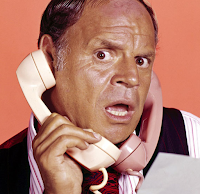There is a way that Marder’s stories function. Beanworld is almost a perfect, self-sustaining cycle. The various elements of this world mesh together to feed and provide a purpose for all of these characters. Marder has warriors, scientists, soldiers, and artists all existing in this harmonious encapsulation of reality. Beanworld Volume 4: Hoka Hoka Burb’l Burb’l begins with this harmony. Mr. Spook leads his Chow Sol’jers into the Hoi-Polloi Ring Herd to get Chow and leave their Sprout-Butt as their way of feeding the cycle of life. This is life in Beanworld. But that’s merely a self-perpetuating cycle and Beanworld is about growth.
The cycle is broken when one of the Chow Sol’jers injures his arm during the raid. This kicks off a series of events that introduces uncertainty into this fairly staid circle of life. And this gets to the heart of Marder’s Beanworld stories. There’s a system to Beanworld which is fairly self-regulating but Marder knows that this “perfect” system doesn’t require the characters to grow at all so he throws conflict at the characters, whether it’s an injury like what happens to one of the Chow Sol’jers or the idea of forces outside of Beanworld like the flighty Dreamishness’s brothers who are introduced in this book. To grow the system, Marder has to break it by introducing uncertainty into it.
Marder’s ecosystem develops and changes because he keeps breaking it and then has to create a new and evolved status quo from the system he just broke. It’s the beauty of a system that it needs conflict in order to evolve. And Marder’s storytelling is systematic but it’s never impersonal or stilted. The self-sustaining nature of Beanworld showcases a world that works together to support itself. There’s conflict but that conflict is actually part of the system and helps to nourish this population. It feeds off of itself while also feeding itself if that makes any sense.
But there’s a difference between what happens in Beanworld Volume 4: Hoka Hoka Burb’l Burb’l and what it means. Marder’s cartooning works in the symbols he’s created through the various classes of beans in his story. In his odd balancing act between individual characters like Beanish and Mr. Spook and the non-individualistic groups like the Chow Sol’jers, the Boom’r Band, and the Pod’l’pool, this book focuses on the changes that can occur within the groups thanks to outside influences. Marder describes this book as the beginning of a new cycle of Beanworld books so maybe it’s a bit too early to understand just what he’s getting at with this book.
Marder is working in parable, using a simple story to reveal a larger truth. But as is often the case when looking at parables, that larger truth isn’t always self-evident. Marder cartoons in symbols and metaphors and only provides the barest of keys to his mystery. The only real key he alludes to in the afterward is that Dreamishness, the one being who exists outside of the cycle of Beanworld, is modelled on his Cory, With that, it would be easy to understand Beanish, the artist of Beanworld, as Marder’s presence in this story but you could probably draw lines from Marder to all of the other characters in this book. That makes Beanworld an incredibly personal story for Marder that’s actually very humanistic. Marder may be all of the characters but he also projects that identification onto the reader as well. We’re artists, scientists, warriors, musicians, children and even hoarders.
Beanworld is billed as “A Most Peculiar Comic Book Experience,” and it certainly lives up to that in Marder’s newest comic. Ultimately that’s what Beanworld Volume 4: Hoka Hoka Burb’l Burb’l is, an experience. As a reader, you experience this world with its creator and its characters, Marder’s wonderfully parabolic cartooning allows this story to be about the personal experience of change. While Marder also peppers in his overarching themes of the right order of the world into the book, he also acknowledges our own personal growth and change that is essential for us and for our society. Hoka Hoka Burb’l Burb’l is the experience of change but it’s also a lesson about the inevitability of change.
Beanworld Volume 4: Hoka Hoka Burb'l Burb'l
Written and drawn by Larry Marder
Published by Dark Horse Books










